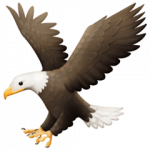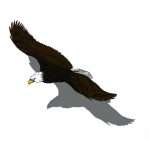by Mary Lowers.
In these dark days on our planet it gives me great comfort to think about the Winter Solstice. The term solstice comes from the Latin word solstitium meaning the Sun stands still. The Winter Solstice for those of us in the northern hemisphere occurs when the Sun is directly over the Tropic of Capricorn in the southern hemisphere. At the Winter Solstice the North Pole is tilted 23.4° away from the Sun. On the day of Winter Solstice the Sun rises in its most southerly position. At noon on the Winter Solstice your shadow is the longest it will be for the entire year.
While the Winter Solstice, which falls in 2016 on Wed., December 21 at 3:44am MST, is the shortest day of the year, it also marks the point where the days slowly get longer again. The Winter Solstice falls on December 20, 21, 22 or 23. On the shortest day we celebrate and anticipate the light coming back. From the earliest of times humans have for practical and spiritual reasons marked the Winter Solstice.
There are many archeoastronomy sites, or ancient observatories, across the planet. In southwest NM there are several of these observatory sites. When the Winter Solstice Sun rises above the Sacramento Mountains in Otera County, NM, it perfectly aligns itself within the rocks at Wally’s Dome archeoastronomy site. This site, which was created and used around 850-1000AD is composed of low stone alignments and rock cairns. It is unique in the southwest and monitors seasonal change. In nearby Lincoln County Wizard’s Roost, an archeoastronomy site discovered in 1977, reflects the sun at Winter Solstice from Cerro Blanco Peak. This site was active from 100BC-900AD and was probably used to time agriculture. It was important for hunter/gathers to keep track of the season to be in the right place for natural wild harvests and seasonal animal migrations.

Kim Malville, Professor Emeritus in Astronomy and expert on prehistoric archeoastronomy in the American southwest, and part time Crestonian, says, “Many sites in the southwestern United States have yielded evidence of the prehistoric Anasazi’s (Ancestral Puebloans) intense interest in astronomy similar to that of the megalithic cultures of Europe.” In Chaco Canyon, NM there are many sacred sites and some are dedicated to the movement of the Earth as it is mapped out in the heavens. Near the top of Fajada Butte in the Chaco complex there are two whorl-shaped or spiral etchings in the rock. They work together to compose the Sun Dagger petroglyph. One of the spirals is the principal vehicle creating the Sun Dagger image, and the second spiral is ancillary in capturing the Fall and Spring Equinoxes. The dagger is revealed when the larger spiral whorl is bisected by a clear, strong and direct ray of sunlight which creates a different pattern of shadow and sunlight. This site marks the Winter Solstice when one of the three slabs making up the rock formation casts a lunar or moon shadow. At the full moon closest to the Winter Solstice as the lunar orb rises, the shadow at the edge of the slab precisely strikes the center of the larger spiral whorl. Hiking to Fajada Butte has been curtailed since 1989 due to damage caused at the site from foot traffic.

At Chaco Canyon there are five other petroglyph sites besides Fajada Butte thought to have astronomical significance, including one resembling a rattlesnake, other spiral whorls and a rectangle which are conspicuously lit by contrasts between sunbeams and shadows during equinoxes and solstices. Philip Tuwaletsti, in his book, Mystery of Chaco Canyon says, “As these people would view the heavens there was an order to things up there. What you had here (on the ground) contrasted that. Some years it was too dry, too hot . . . too windy, too cold. If there was a way to transfer the orderly nature of the cosmos down onto what seems to be chaos that exists here, then you begin to integrate at this place (Chaco Canyon) both heaven and earth.”
At Mesa Verde, CO the “D” shaped structure known as the Sun Temple clearly shows its builders had knowledge of solar and lunar cycles. During the Winter Solstice it aligns at sunset with the Sun Temple. The phenomena can be best viewed from a platform at the south end of Cliff Palace across Fewkes Canyon. At the bottom of the canyon is the so-called Sun Temple Fire Pit which is illuminated by the first rays of sunlight on Winter Solstice. This is considered to be one of the largest exclusively ceremonial structures built by the Ancestral Puebleans.
Cahokia, the great city built by ancient indigenous people some call Mississippian in what is now Illinois, has within it a “woodhenge” style ceremonial circle measuring 412’ in diameter. Built around 950AD, it contains four cardinal posts at the four points of the compass, north, south, east, and west. The eastern and western posts mark the equinoxes at sunrise and sunset. Four other posts in the ring mark the Summer Solstice and the Winter Solstice at sunrise and sunset on those days. Evidence shows there have been five successive “woodhenges” erected at the huge Cahokia site, indicating the lasting importance of accurately marking the seasons.

photo by Peter Eidenbach courtesy of Amateur Astronomers Group
The Serpent Mound in Ohio, dated at around 1070AD, is considered by many to be an archeoastronomy site. The head of the serpent is aligned to the Summer Solstice sunset. Coils of the serpent point to the Winter Solstice. The mound is 1370’ long and 1’-3’ high and includes 70 coils. This site consolidates astronomical information into a single symbol, that of the serpent, a classic symbol of change and its cycles.
As a subdivision was being put in around Bonny Lake, WA in 1999, an archeoastronomical site was discovered. The site called Skystone has significance to the Puyallup indigenous people. The 4.5’ x 12’ boulder has pits pounded into its surface which align with the Sun’s position at the Summer and Winter Solstices.
Throughout time humans have observed seasonal milestones such as the Winter Solstice and created spiritual and cultural holidays around these celestial events. Harry Yeide, a Professor of Religion, commented on the relationship between the Winter Solstice and Christmas, “In several languages, not just English, people have traditionally compared the rebirth of the sun” at Winter Solstice “with the birth of the son of God.” And the Christian son of God, Jesus, is sometimes referred to as the light of the world which is renewed, reborn every return of the wheel of the year to the Winter Solstice.

